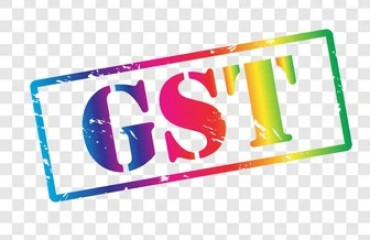
Indian Prime Minister Narendra Modi’s announcement on Independence Day about launching the next phase of goods and services tax (GST) reforms by Diwali this year adds tremendous heft and seriousness to this long-awaited policy change. There is a lot to be said about its timeliness too—with global headwinds in the wake of US tariff tantrums having dampened sentiment considerably in India’s manufacturing and export sectors.
Indian Prime Minister Narendra Modi's announcement on Independence Day about launching the next phase of goods and services tax (GST) reforms by Diwali this year adds tremendous heft and seriousness to this long-awaited policy change. There is a lot to be said about its timeliness too—with global headwinds in the wake of US tariff tantrums having dampened sentiment considerably in India's manufacturing and export sectors.
The package not only clearly articulates the Centre's vision of a reformed GST, but also pushes all the right buttons: we can expect a neater, less dispute-prone and stable rate structure; correction of rate-structure inversions; ease of living for businesses, with the streamlining of three key business processes of registration, return filing and refunds; a reduction in tax incidence for a wide array of constituencies ranging from students and women to the middle-class and farmers, with the burden eased on items of mass consumption as well as 'aspirational' goods.
The package on its way also acknowledges the need for stability in the rate structure, which is music to the ears of change-fatigued stakeholders.
Also Read: Mint Quick Edit | GST 2.0: Reform at long last
In many ways, the level of ambition goes far beyond what was expected.
First, what has been figural so far is mainly rate rationalization and the fate of the GST compensation cess. The current proposal, however, also goes into the administrative realm to address day-to-day pain points for businesses. It seeks to improve the mechanism for registration, return filing and refunds through greater use of technology.
Second, the expectation was that the four- rate structure of 5%, 12%, 18% and 28% slabs would be compressed to three. What is proposed now is a reduction to only two: reportedly, a standard rate of 18% and a merit rate of 5%, with a special rate of 40% only for a "select few" items that qualify as demerit or sin goods. Hopefully, this would be accompanied by broad-banding goods of the same class under a uniform rate slab, so that classification disputes are minimized. Food products are a case in point.
Also Read: Scrapping GST on insurance premiums: A remedy worse than the disease?
Third, the proposed cuts are not only extensive in coverage but also deep.
But this is the Centre's vision. For it to morph into reality, Indian states need to endorse it as and when the GST Council meets. According to reports, the group of ministers (GoM) on GST has already endorsed it. Judged by the yardstick of canons of taxation as well as mass appeal, the package is too attractive to be dismissed outright. Overall, at the national level, the proposal also seems to be revenue balanced or only marginally revenue negative, with the promise of losses expected to be neutralized in due course, thanks to its positive impact on retail prices and consumption.
Also Read: Mint Quick Edit | Market buoyancy: Thank GST expectancy
It could be argued that some net revenue loss in the short-run is a small price to pay for such a simplified GST structure. In the absence of granular data on their respective consumption patterns and the balance between their imports from and export to others, it is not possible to compute the revenue implications for individual states.
Moreover, the GoM's recommendations on the compensation cess remain unknown. The Centre appears to be of the view that the cess should go. Current Constitutional provisions do not allow GST-related cesses to be levied in any form. Given this background, it is legitimate for states—particularly those that foresee their revenues being impacted adversely—to seek some revenue-saving adjustments.
There are several possible ways in which these adjustments could be made. For instance, the current incidence (inclusive of compensation cess) on some 'sin goods' is much higher than 40% (the peak statutory rate of GST). This could be maintained through a suitable amendment of the GST law. Alternatively, the levy on tobacco products in excess of 40% could be loaded onto Central excise duty, which is also part of the divisible pool for revenue and would therefore reach state coffers too.
The list of items moving from 28% to 40% could include some 'luxury goods' in addition to demerit or sin goods. Likewise, some more items could migrate from 12% to 18% instead of going down to 5%. Another possible approach could be to phase in the reductions based on a pre-announced glide path, so that the drop in revenue is gradual.
Also Read: GST 2.0: A tax reform that could deliver a more competitive India
While the proposed rate rationalization would receive a positive response both from industry and consumers, there are a few linked issues that need to be addressed for the transition to be painless. The ease of living pillar of the package already contains a reference to ironing out the GST refund process. If most items at 12% migrate to the lower rate of 5%, refunds arising from inverted rates would clearly increase under the new structure. It would impact pharmaceutical products, fertilizers and tractors, among others. Unless the refund mechanism for accumulated input tax credits is robust, timely and smooth, this would imply working capital being blocked for prolonged periods in such sectors.
Among the other major concerns that businesses have are whether and in what form the mechanism for implementation of anti-profiteering provisions would be reinstated, and whether they would have sufficient lead time to tweak their enterprise resource planning systems in the midst of the busy festival season. Hopefully, the GST Council will address these issues when it meets in September.
